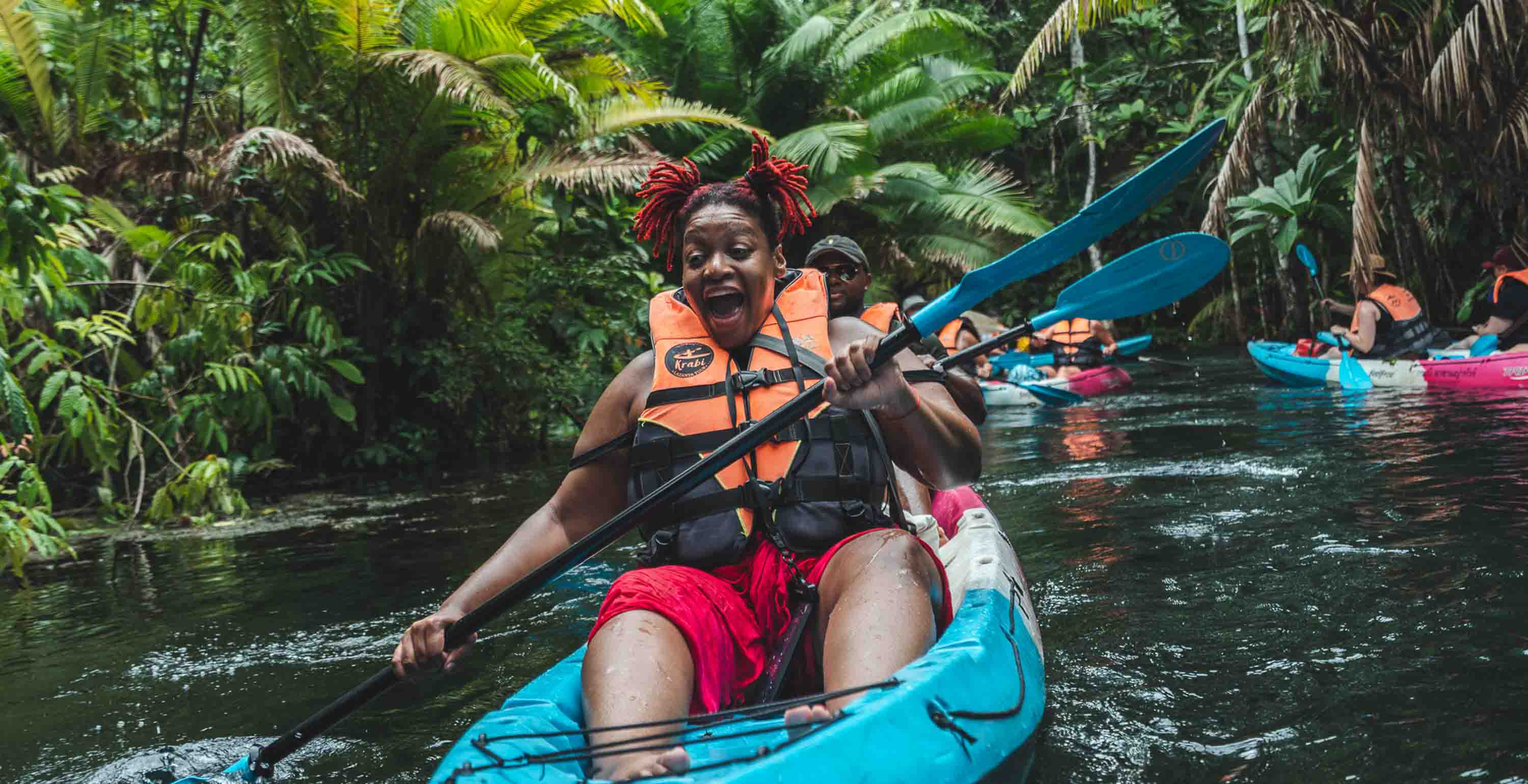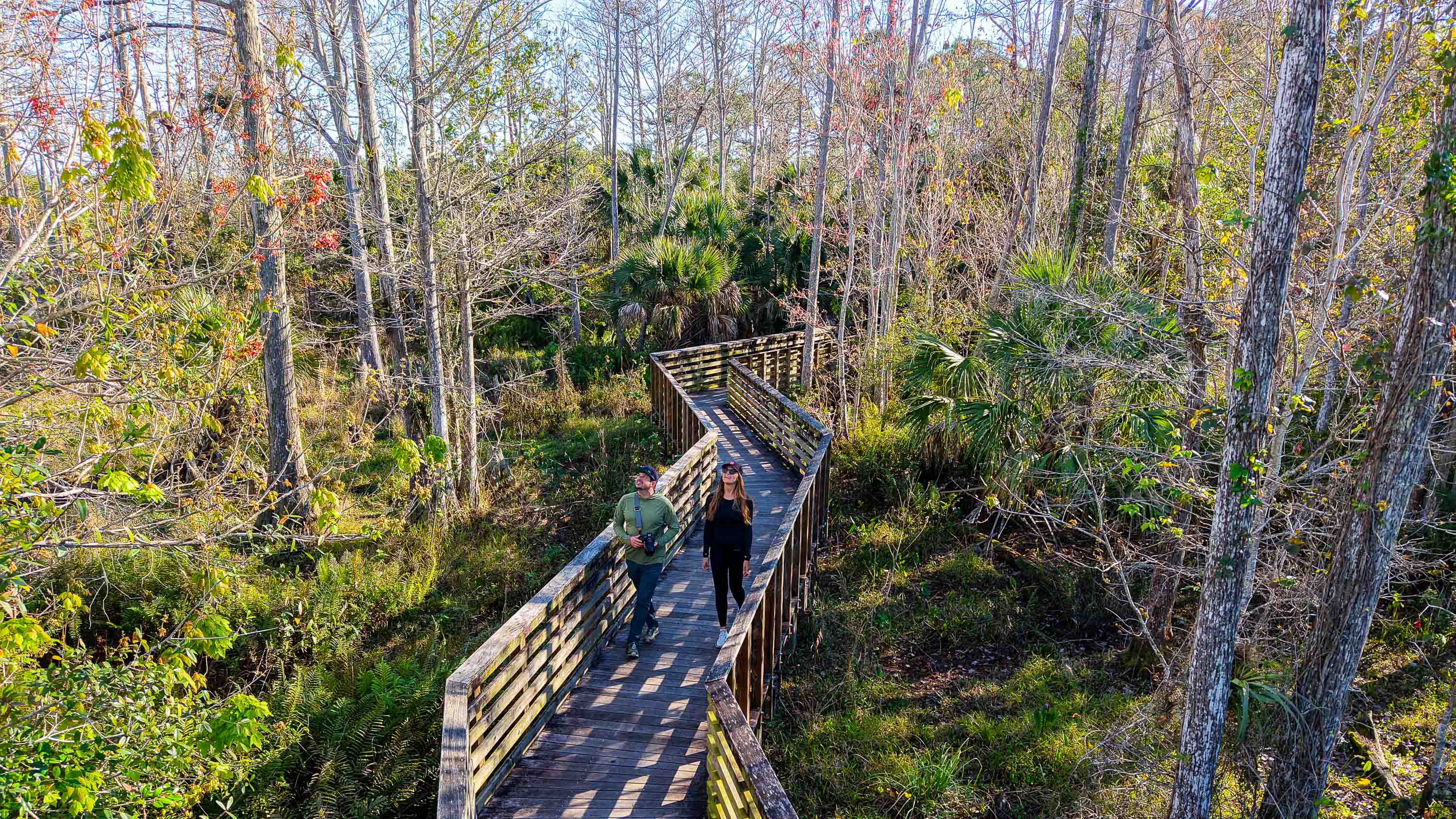Breaks Interstate Park in Breaks, Virginia
The Appalachian Mountains often get dismissed for their relatively small size compared to the Rocky Mountains. That doesn't mean Appalachia doesn't have spectacular mountain scenery; it means the mountains here are older, and have been eroded by water and time. The site that's now Breaks Interstate Park was covered by an inland sea 180 million years ago — about 100 million years before the Rockies were formed. The Russell Fork River, which eventually dumps into the Big Sandy River and eventually the Mississippi, carved valleys through the area. Appalachian is home to numerous mountain gorges, but the one at Breaks is the deepest canyon in the eastern U.S. During the warmer months, Breaks runs zipline tours through the canyon. Guides take groups of no more than eight people along 2,300 feet of ziplines, with trips lasting between an hour and a half and two and a half hours. Famed mountain longhunter Daniel Boone named the area “The Breaks.” It's now a dual state park, jointly operated by Kentucky and Virginia. While the park exhibits some of Appalachia's ancient geography, it's also home to one of the region's newest big industries: outdoor recreation. Breaks Interstate Park features a lot of the same rugged terrain and outdoor recreation opportunities of national parks to its north and south, but a tiny fraction of the crowds. The Russell Fork River has technical whitewater for paddlers, with sections ranging from class III - V rapids, depending on flow levels. The sandstone walls of the canyons make for stellar rock climbing with both traditional and sport-climbing routes. (Rock climbing does require completion of a waiver form.) Hikers can explore the canyon on foot too, with a variety of trails for hikers of all abilities. Trails range from steep to relatively flat, and take hikers through forests, along ridges and past the former homes of people who lived in the area before the park was established. Some trails are open to mountain bikes and e-bikes. The park routinely runs tours to see a herd of elk that was reintroduced by Virginia officials several years ago. The elk mostly hang out at a 2,600-acre former strip mine site that was restored by wildlife enthusiasts who seeded native plants, made soil improvements and generally tried to create good elk habitat. The elk reintroduction is one of many efforts to reuse land that was blown to bits by mountaintop removal mining. Virginia holds an annual lottery for the chance to participate in a managed elk hunt.


The Appalachian Mountains often get dismissed for their relatively small size compared to the Rocky Mountains. That doesn't mean Appalachia doesn't have spectacular mountain scenery; it means the mountains here are older, and have been eroded by water and time.
The site that's now Breaks Interstate Park was covered by an inland sea 180 million years ago — about 100 million years before the Rockies were formed. The Russell Fork River, which eventually dumps into the Big Sandy River and eventually the Mississippi, carved valleys through the area. Appalachian is home to numerous mountain gorges, but the one at Breaks is the deepest canyon in the eastern U.S.
During the warmer months, Breaks runs zipline tours through the canyon. Guides take groups of no more than eight people along 2,300 feet of ziplines, with trips lasting between an hour and a half and two and a half hours.
Famed mountain longhunter Daniel Boone named the area “The Breaks.” It's now a dual state park, jointly operated by Kentucky and Virginia. While the park exhibits some of Appalachia's ancient geography, it's also home to one of the region's newest big industries: outdoor recreation.
Breaks Interstate Park features a lot of the same rugged terrain and outdoor recreation opportunities of national parks to its north and south, but a tiny fraction of the crowds. The Russell Fork River has technical whitewater for paddlers, with sections ranging from class III - V rapids, depending on flow levels. The sandstone walls of the canyons make for stellar rock climbing with both traditional and sport-climbing routes. (Rock climbing does require completion of a waiver form.)
Hikers can explore the canyon on foot too, with a variety of trails for hikers of all abilities. Trails range from steep to relatively flat, and take hikers through forests, along ridges and past the former homes of people who lived in the area before the park was established. Some trails are open to mountain bikes and e-bikes.
The park routinely runs tours to see a herd of elk that was reintroduced by Virginia officials several years ago. The elk mostly hang out at a 2,600-acre former strip mine site that was restored by wildlife enthusiasts who seeded native plants, made soil improvements and generally tried to create good elk habitat. The elk reintroduction is one of many efforts to reuse land that was blown to bits by mountaintop removal mining. Virginia holds an annual lottery for the chance to participate in a managed elk hunt.




























































































































































































































































